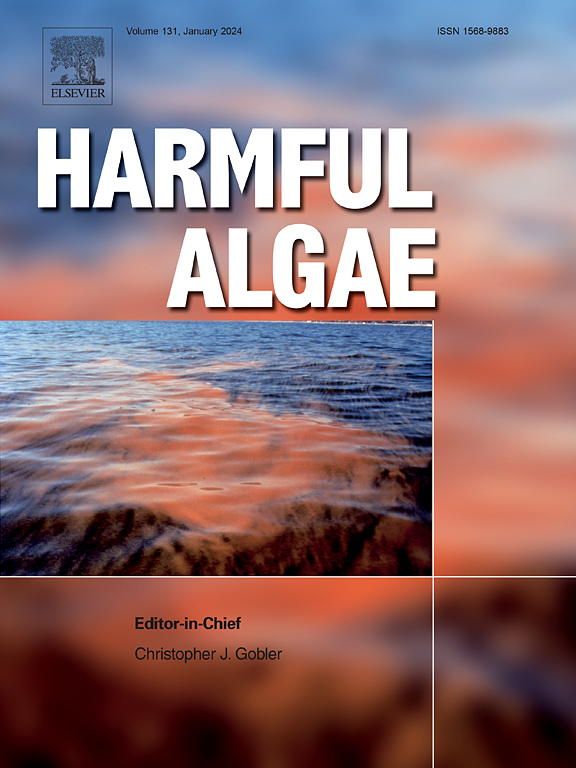对有毒蓝藻Kaarinaea lacus gen. nov., sp. nov.中异母细胞模式和异母细胞分裂的见解,及其天然产物的基因组潜力
IF 5.5
1区 生物学
Q1 MARINE & FRESHWATER BIOLOGY
引用次数: 0
摘要
利用系统发育、形态和基因组分析对芬兰某淡水湖混合蓝藻华中分离出的有毒蓝藻Nostoc sp. 152 (= PCC 9237T)进行了重新评估。多位点和16S rRNA基因系统发育分析证实,该菌株代表一个新的回溯动物属,我们根据《国际原核生物命名法》将其命名为Kaarinaea lacus gen. nov., sp. nov.。PCC 9237T最有趣的形态学特征是偶有异源细胞分裂。根据我们的观察,我们提出了导致这种现象发生的事件顺序的假设。另一个有趣的特征包括不寻常的异母细胞模式,导致在旧的培养中,异母细胞的序列发育,然后在这个部位分裂。在PCC 9237T的基因组中,未发现与异细胞分化和模式相关的基因,包括patC和hetP的3个同源基因。此外,基因组研究揭示了异细胞糖脂基因簇的一个变体,它具有减少的hglB,但具有额外的基因编码具有TubCN末端对接结构域的蛋白质。最后,其产物可能干扰细胞分化的pks2样基因簇和anachelin样基因簇的存在需要进一步研究。本文章由计算机程序翻译,如有差异,请以英文原文为准。
Insight on the heterocyte patterning and the proheterocyte division in the toxic cyanobacterium Kaarinaea lacus gen. nov., sp. nov., and its genomic potential for natural products
Nostoc sp. 152 (= PCC 9237T), a toxic cyanobacterium, isolated from mixed cyanobacterial bloom in a Finnish freshwater lake was reassessed using phylogenetic, morphological and genomic analyses. Multilocus and 16S rRNA gene phylogenetic analyses confirmed that this strain represents a novel Nostocalean genus for which we propose the name Kaarinaea lacus gen. nov., sp. nov., in accordance with the International Code of Nomenclature of Prokaryotes. The most intriguing morphological feature exhibited by PCC 9237T is the occasional division of proheterocytes. Based on our observations, we propose a hypothesis for the sequence of events taking place leading to this phenomenon. The other interesting feature includes the unusual heterocyte patterning resulting in the development of heterocytes in series in the old culture followed by its fragmentation at this site. Among the genes involved in heterocyte differentiation and patterning, patC and three homologs of hetP were not found from the genome of PCC 9237T. Furthermore, genomic investigations revealed a variant of heterocyte glycolipid gene cluster with a reduced hglB, but having additional gene coding for a protein with TubC![]() N terminal docking domain. Finally, the presence of a pks2-like gene cluster, whose product may interfere with the cellular differentiation, and an anachelin-like gene cluster demands further investigations.
N terminal docking domain. Finally, the presence of a pks2-like gene cluster, whose product may interfere with the cellular differentiation, and an anachelin-like gene cluster demands further investigations.
求助全文
通过发布文献求助,成功后即可免费获取论文全文。
去求助
来源期刊

Harmful Algae
生物-海洋与淡水生物学
CiteScore
12.50
自引率
15.20%
发文量
122
审稿时长
7.5 months
期刊介绍:
This journal provides a forum to promote knowledge of harmful microalgae and macroalgae, including cyanobacteria, as well as monitoring, management and control of these organisms.
 求助内容:
求助内容: 应助结果提醒方式:
应助结果提醒方式:


